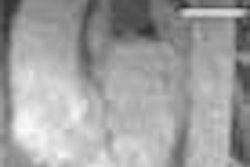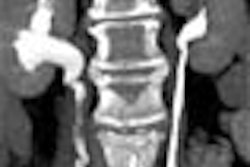An Italian cardiologist has published an opinion article in the British Medical Journal stating that physicians and patients do not know enough about the risks of radiological procedures, and that doctors should be required to have "radiological driving licenses" with penalties given for ordering inappropriate exams.
The article was published in the March 6 edition of BMJ and was authored by Dr. Eugenio Picano, a cardiologist at the Institute of Clinical Physiology in Pisa who specializes in echocardiography (BMJ, March 6, Vol. 328: No. 7439, pp. 578-580.)
Picano cites past research indicating that "up to a third of radiological examinations are totally or partially inappropriate." He believes that radiation from medical tests is the culprit behind a large rise in the levels of radiation dose exposure in developed countries, levels that soon may exceed radiation dose exposure levels from natural sources.
Radiation hormesis theory, which asserts that small radiation doses could be beneficial, has not yet been proven, Picano states, and therefore physicians should continue to abide by principles calling for doctors to keep radiation dose to patients as low as reasonably achievable (ALARA).
Picano believes that few physicians are aware of the radiation levels delivered to patients during medical imaging tests -- in part because "basic radiological information is often difficult to find and to understand." "The obscure and non-standardized terminology makes it difficult for researchers -- not to mention clinicians -- to understand the dose and the risks connected to procedures," he states.
Picano believes that existing European laws -- specifically the Euratom Directives on protecting the public from radiation dose -- have established a good start in promoting radiation awareness. The Euratom Directives recommend that the need for an exam should be justified before a patient is referred to a radiologist or nuclear medicine physician, and that a nonionizing imaging technique should be used whenever possible.
But Picano recommends that the Euratom rules should be reinforced in the following ways:
- Physicians should be required to hold a "radiological driving license" before being allowed to refer patients for imaging exams. Penalty points could be assessed for inappropriate referrals, with penalties rising in correlation with the level of radiation dose. If a certain penalty threshold is exceeded, physicians could be forced to attend a radiobiology course or have their licenses temporarily withdrawn.
- Every scientific paper dealing with radiology should include a table that describes all the tests performed in the study and the cumulative radiation exposure absorbed by the study population. This would make both study authors and readers more aware of the levels of radiation involved in imaging research, he said.
- Patients should be required to sign informed consent forms for each radiological exam. The form would detail the type of investigation, the exposure in effective dose (mSv), the dose equivalent in the number of chest radiographs, and the risks of fatal and non-fatal cancer and "major genetic damage being transmitted to children." Picano believes that consent forms would reduce pressure from patients for redundant exams.
By Brian Casey
AuntMinnie.com staff writer
March 4, 2004
Related Reading
New Jersey charges former Cares Built execs in radiation overexposure case, March 3, 2004
Some cancers may be due to diagnostic X-rays, January 30, 2004
State x-ray quality assurance program yields dividends, January 23, 2004
Is your preventive imaging program responsible?, November 24, 2003
Radiologists offer new guidance on reducing CT radiation dose, August 14, 2003
Radiation doses in Hiroshima survivors confirmed, July 31, 2003
Radiation hormesis and the radiologic imperative, March 21, 2003
Copyright © 2004 AuntMinnie.com



















